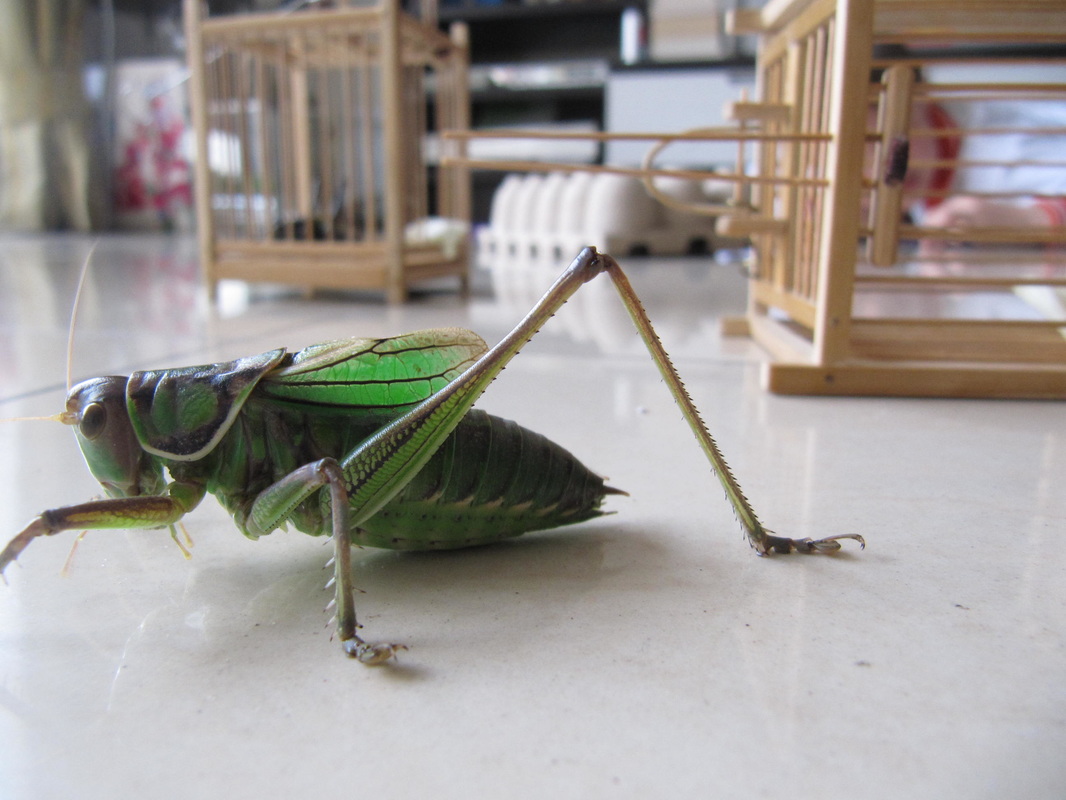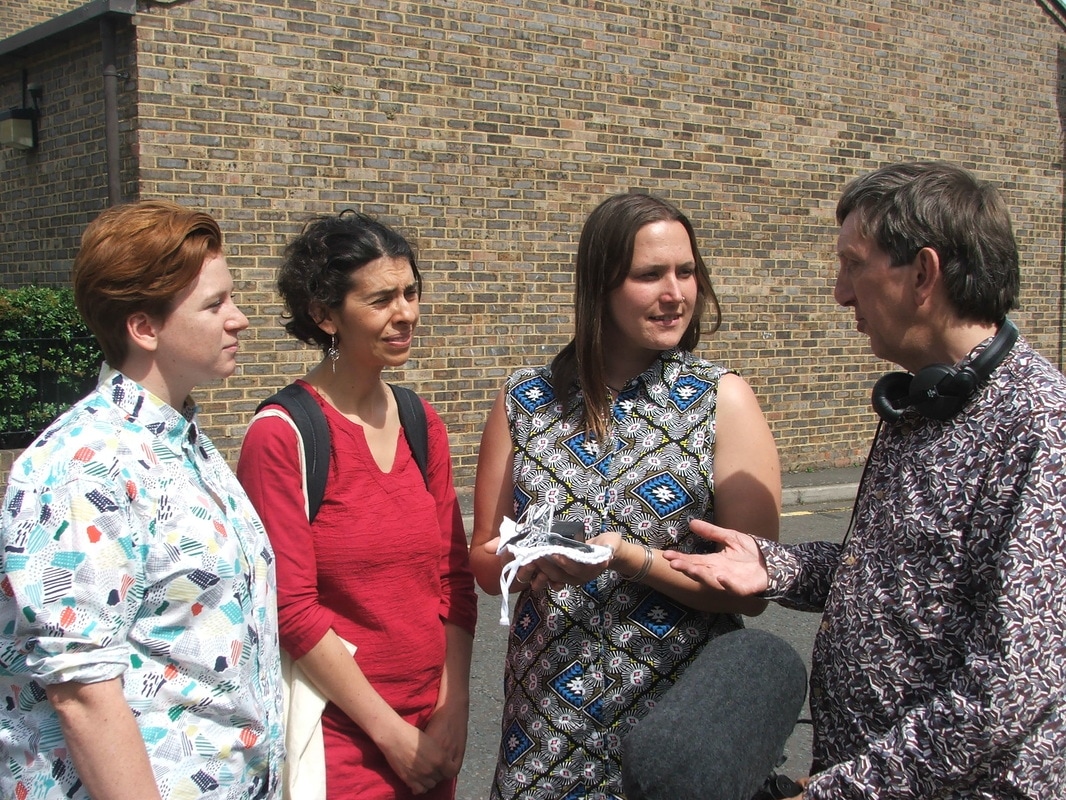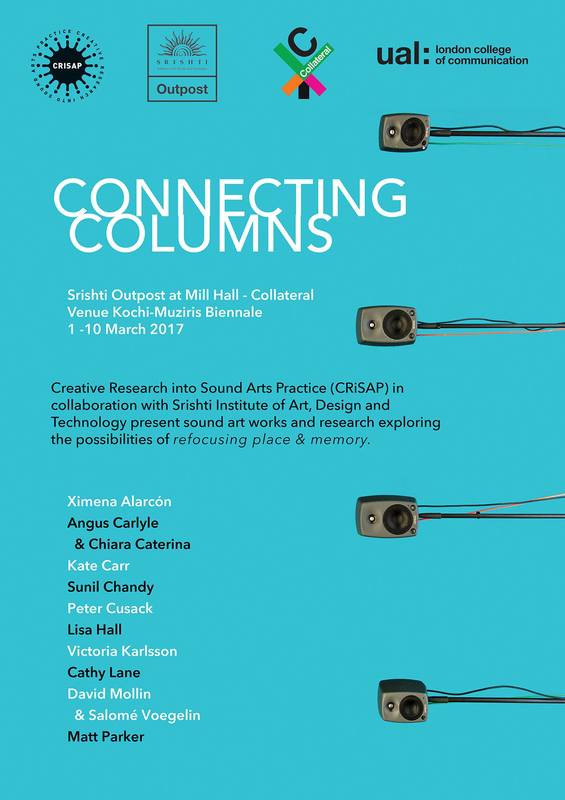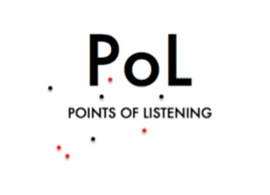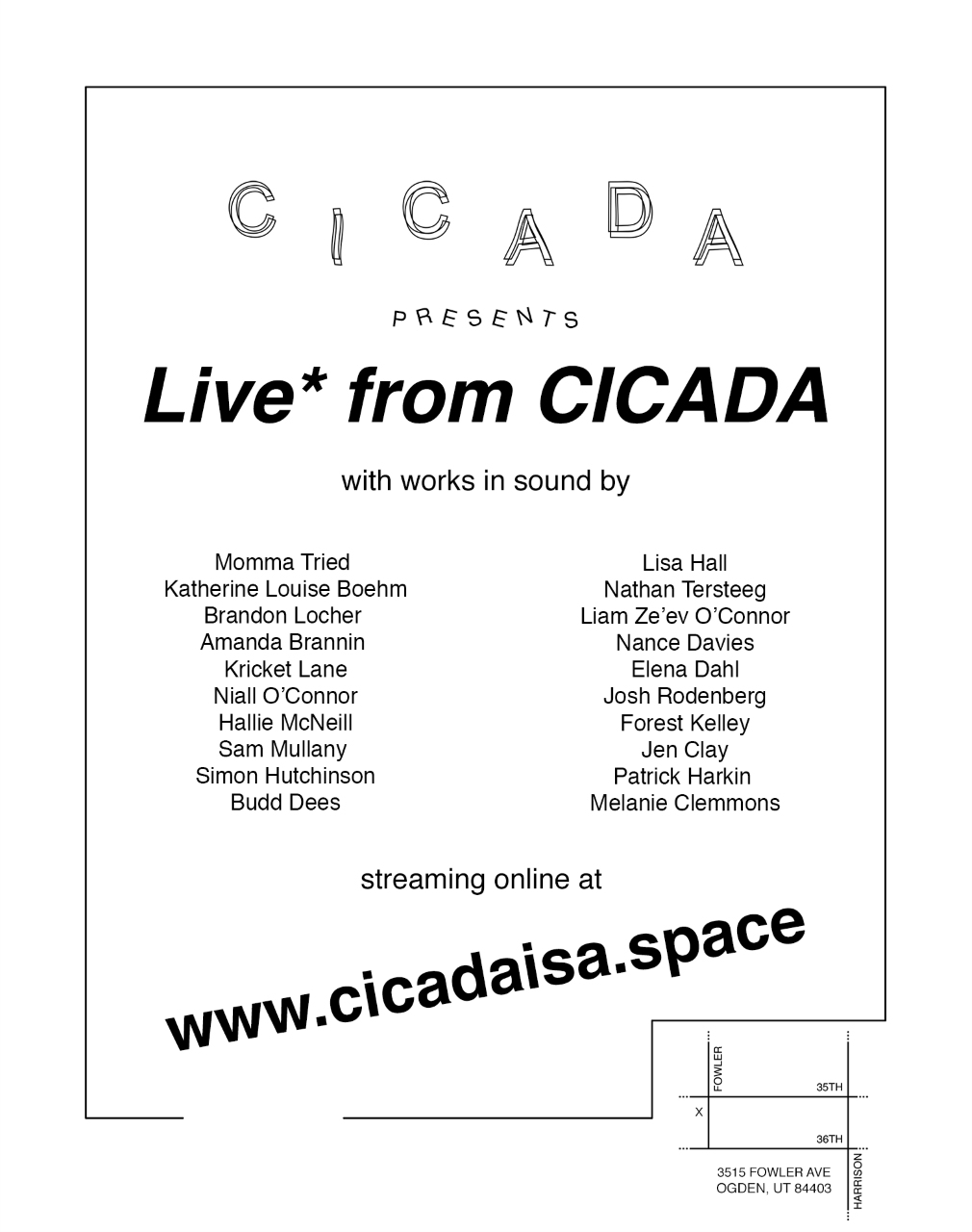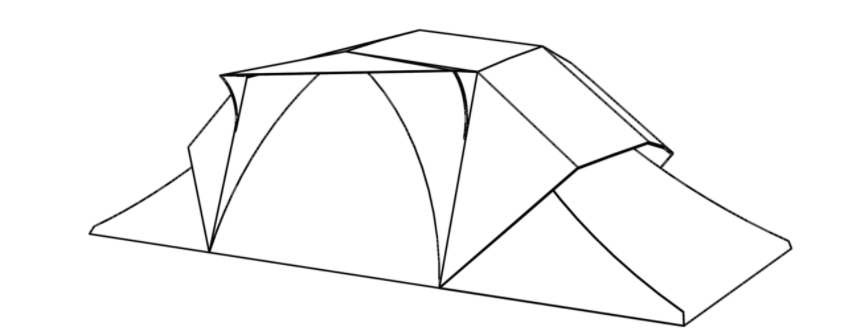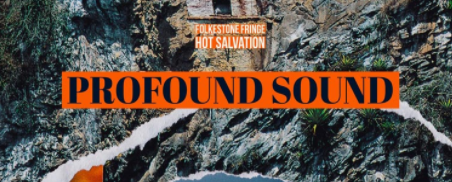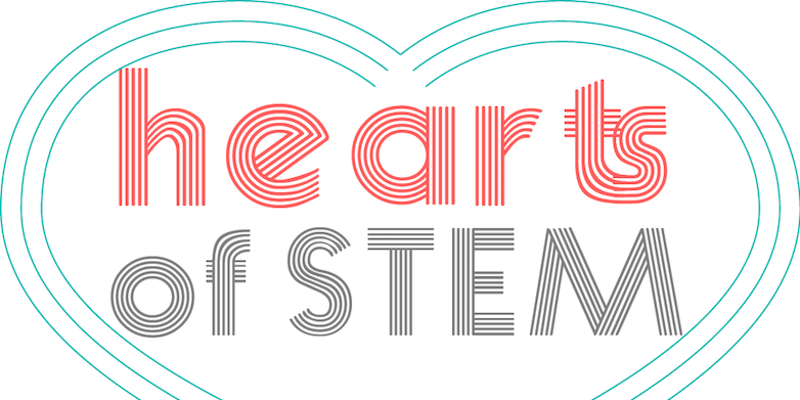|
A sound walk with crickets to explore the city.
This work takes as its starting point a sonic trend which began in China over 1000 years ago in the Tang Dynasty – that of keeping crickets for their song. While mainly kept in the home or garden, the crickets were also carried around in small gourds, concealed in clothes and worn like a portable music player. It is thought that the practice, started by the royal family, began in order to bring company and comfort to the listener. The trend quickly caught on and became a popular pastime practiced widely in society, and it continues to this day.
Walking with Crickets is a digital re-enactment of this trend. Participants are invited to experience and contemplate the act of carrying this sound through the immediate environs on a group or individual walk, to explore an alternative to our present day sonic trend of headphones and mobile devices that are so popular in cities today. Through this public form of sounding and listening, we can experience not only the cricket song as a mobile music, but also how we relate to the spaces around us. How do we hear the city, ourselves within in and how are we ourselves heard? Can this technique make us think differently about our position and relationship to the spaces we move through, and the people that we pass? In this way, this sound walk will use the cricket song as both a measure and a lens through which to explore our location – to sound out our surroundings, hear ourselves appear and disappear in the sea of noise, and explore our city in new ways. Shared at:
and others. Full details below. This sound walk is a development on the sound work Regresses, a collaborative performance in 2015 at the V&A museum.
Binaural recording of the cricket walk by Richard Bentley via Radio Aporee |
SOUND WALKS / Exhibitions
|
BBC Radio 4 - Natural Histories
November 2016 Walking with Crickets featuring in the Natural Histories radio series by Brett Westwood, in the November episode exploring the cultural interest in the cricket with producer Sarah Blunt. A sound walk and interview recorded in Elephant and Castle, London with a small group of cricket song sound walkers - Ximena Alarcón, Hannah Kemp Welch and Francesca Oldfield.
"When Brett Westwood is invited to stroll around the streets of London with a ‘singing cricket‘ as a companion he is following a tradition which can be traced back over a thousand years ago to before the Tang Dynasty in China when people kept crickets in cages and enjoyed their songs. This custom began in the Royal Courts when the Emperor’s concubines placed caged crickets near their pillows so they could enjoy the songs during the night. The practise was soon taken up by local people who carried crickets around in tiny cages and in London, Brett meets Lisa Hall, a sound artist who has brought the tradition right up to date with a tiny audio player fitted with a set of speakers that are small enough to be concealed in a pocket. As Lisa explains the effect is like wearing ‘a perfume’ of song which masks the ugly urban sounds. Could this audio trend catch on? Producer: Sarah Blunt" Watch on BBC iPlayer: http://www.bbc.co.uk/programmes/p04d6ngv |
|
Connecting Columns - Kochi-Muziris Biennale India, March 2017 Walking with Crickets: Cities, Audio, 8'30'' CRiSAP in collaboration with Srishti Institute of Art, Design and Technology present sound art works and research exploring the possibilities of refocusing place & memory. Works by; Ximena Alarcón, Angus Carlyle & Chiara Caterina, Kate Carr, Sunil Chandy, Peter Cusack, Lisa Hall, Victoria Karlsson, Cathy Lane, David Mollin & Salomé Voegelin, Matt Parker. Read more on CRiSAP. http://www.kochimuzirisbiennale.org/ |
|
Points of Listening
CRiSAP, London College of Communication London, April 2016 A sound walk with Points of Listening, a Creative Research into Sound Arts Practice (CRiSAP) series of listening based events co convened by Salomé Voegelin and Mark Peter Wright at London College of Communication (LCC), University of the Arts London. The sound walk and talk took place at LCC with a small group of attendees, exploring the surrounding streets and pathways of Southwalk, moving through a range of spaces architecturally, functionally acoustically and aesthetically. Full documentation available on the Points of Listening website. |
|
LIVE* at CICADA
CICADA Gallery, Utah, USA April 2019 Live* from CICADA presents the work of twenty artists working in sound. For this exhibition, each audio work has been processed with an impulse response recording made within the the physical space of CICADA (an artist-run venue located in Ogden, Utah). By treating each piece with the natural reverberant qualities found within the approximately 1,325 cubic foot gallery space, a hypothetical performance takes place where the sonic works made in disparate locations now aurally appear to have been originally performed within the same subterranean structure. Live* from CICADA is the recorded document of this conceptual event. Visit the online sound exhibition here. |
|
Sound Traces Moves Conference
GTF Society for Dance Research, Orf Institute Austria, November 2016 Cricket song sound walks in Salzburg with the Sound Traces Moves conference of dance and choreography researchers and practitioners. "The term TRACES has been positioned very intentionally between the two central artistic means of expression SOUNDS and MOVES, as interface so to speak, since sounds as well as bodily movements can both be regarded as traces due to their volatility in space and time. They can enter into a dialog with other artistic traces (of movement), such as the grand brushstroke of a painter, the fine drawings of a graphic artist, the light projections of a digital installation or the invisible traces of sensor-based motion capture practices, in order to access further dimensions of space and time for the hearing and seeing of movement dynamics. Against this backdrop, an (in the best sense) endlessly creative process gathers momentum, in which audible and/or visible movement traces are permanently recreated, without ever getting clearly defined contours nor even taking a definite shape." |
|
|
Temporary Autonomous Zones Conference
ISSTA, Ulster University Northern Ireland, September 2016 A sound walk at Irish Sound Science and technology Association's (ISSTA) annual peer reviewed conference Temporary Autonomous Zones in Derry, Northern Ireland. Starting at the Nerve Centre, the walk wove a route through the city centre with a group of conference attendees, following the path of the cities walls and surrounding roads, gardens and car parks. About the conference: One of the reasons we value sound as a perceptual and phenomenological event is that it allows for the creation of new types of sensory engagement with space. Creative processes of sounding allow us to design different types of sound worlds; places which can become autonomous zones. Lefebvre, in his seminal text The Production of Space, alludes to the concept of autonomous zones or imagined spaces; places which are imagined and created by community. The idea of how we create and respond to autonomous zones is the subject of this year’s ISSTA festival as it comes to Northern Ireland for the first time, fostering a range of artistic, technological and academic interventions in Derry/Londonderry entitled Temporary Autonomous Zones 2016. A Temporary Autonomous Zone (TAZ), as defined by the poet and anarchist cultural theorist Hakim Bey, is more than just a distinct space; it is a space in control of itself, in that it does not recognise outside authority. http://issta.ie/isstc-2016/ ISSTA 2016 from Pillarpix Media on Vimeo. |
|
|
Animal Sounds - Resonance FM
November 2016 A sound walk in East London with Animals Sounds presenter Robbie Judkins for the November episode of Animal Sounds. http://cargocollective.com/robbiejudkins/Animal-Sounds |
|
|
Sound Camp
London, May 2017 An outdoor listening event on International Dawn Chorus Day at Stave Hill Ecological Park, including a 24 hour live stream following the dawn chorus around the world. http://soundtent.org/ |
|
Profound Sound Festival
Folkestone, February 2017 Reaching across traditional forms of music to the fringes of sound-art covering song and instrumental performance, spoken word, radio broadcasting, sound installation, opera, contemporary classical and jazz, electoracoustic and sound-art. A Folkestone Fringe Festival. http://www.folkestonefringe.com/2017/profound-sound.html |
|
Sound + Environment Conference
University of Hull Hull, June 2017 A four day conference bringing together artists and scientists to explore the ways that sound can deepen our understanding of environments. For example, recent developments in the field of ecoacoustics are proving fruitful in assessing ecosystem change. Sound is also increasingly used to monitor built structures and to inform urban design. We can use sound for scientific and artistic exploration, to inform and expand our knowledge of environments and our relationships to the world around us. What can we learn from each other? Sound can inform a range of innovative interventions and solutions to problems. Through exploring scientific and artistic approaches together, we hope to engage with sound in order to create complementary ways of investigating, understanding, and taking action. https://soundenvironment.net/ |
|
|
Inclusive Creativity: Digital Practices symposium
University of Ulster & Walled City Music Festival Northern Ireland, May 2017 A series of events in Derry/Londonderry including an international symposium, workshops, presentations, art installations, and concerts on community engagement with creative technologies. http://inclusivecreativity.com/News-and-Events/Inclusive-Digital-Practices-symposium-announced |
Lead image credit: ivanwalsh.com – creative commons attribution
